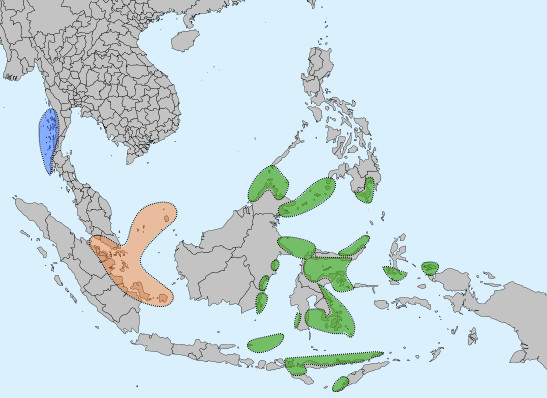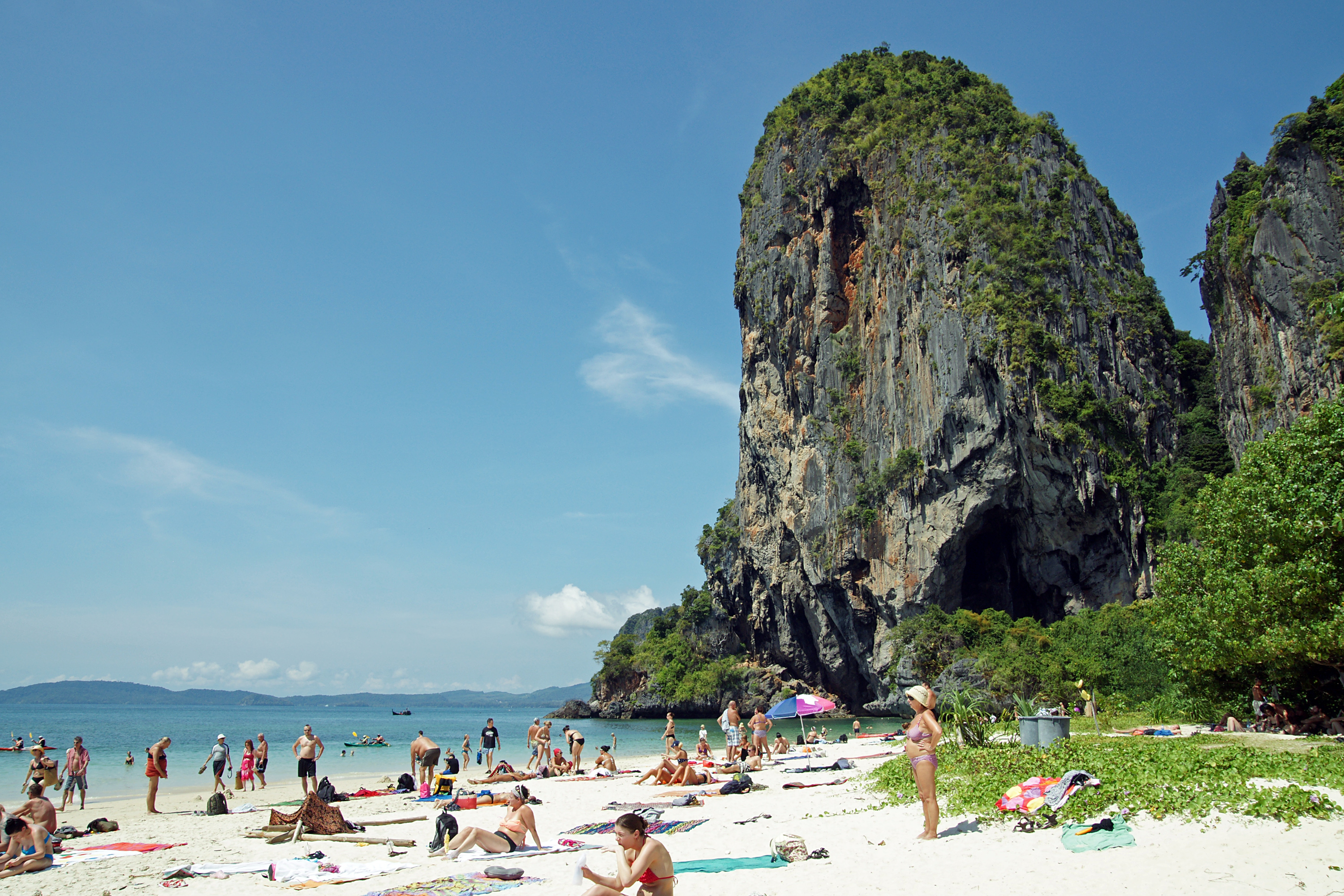|
Burmese Malays
Burmese Malays ( ms, Melayu Myanmar/Melayu Burma, Jawi: ملايو ميانمار, my, ပသျှူးလူမျိုး, ''Pashu''), primarily live in Tanintharyi Region in the southern part of Myanmar. There are some dispersed Malay from the northernmost states of Malaysia and from southern Thailand. They are believed to be of Kedahan Malay descent. Some of the Moken people in the Mergui Archipelago speak a dialect of Malay. In 1865, an Arab-Malay group led by Nayuda Ahmed, traveling and collecting sea products around Mergui Archipelago settled down in Victoria Point Bay, now located in modern-day Kawthaung, which commenced the first wave of migration from Kedah. The Burmese Malays mainly live in Bokpyin Township and a few islands in the southern part of the Mergui Archipelago. The Malay influence is clearly visible in the names of certain settlements near Kawthaung - the words ''Kampong'', ''Ulu'', ''Telok'', ''Tengah'' and ''Pulau'' (Malay words for village, r ... [...More Info...] [...Related Items...] OR: [Wikipedia] [Google] [Baidu] |
Tanintharyi Region
Tanintharyi Region ( my, တနင်္သာရီတိုင်းဒေသကြီး, ; Mon: or ; ms, Tanah Sari; formerly Tenasserim Division and subsequently Tanintharyi Division, th, ตะนาวศรี, RTGS: ''Tanao Si'', ; formerly known as Tanao Si) is an administrative region of Myanmar, covering the long narrow southern part of the country on the upper Malay peninsula, reaching to the Kra Isthmus. It borders the Andaman Sea to the west and the Tenasserim Hills, beyond which lie Thailand, to the east. To the north is the Mon State. There are many islands off the coast, the large Mergui Archipelago in the southern and central coastal areas and the smaller Moscos Islands off the northern shores. The capital of the division is Dawei (Tavoy). Other important cities include Myeik (Mergui) and Kawthaung. The division covers an area of 43,344.9 km², and had a population of 1,406,434 at the 2014 Census. Names Mon: or ; ms, Tanah Sari, part of the Ha ... [...More Info...] [...Related Items...] OR: [Wikipedia] [Google] [Baidu] |
Malay Language
Malay (; ms, Bahasa Melayu, links=no, Jawi alphabet, Jawi: , Rejang script, Rencong: ) is an Austronesian languages, Austronesian language that is an official language of Brunei, Indonesia, Malaysia, and Singapore, and that is also spoken in East Timor and parts of the Philippines and Thailand. Altogether, it is spoken by 290 million people (around 260 million in Indonesia alone in its own literary standard named "Indonesian language, Indonesian") across Maritime Southeast Asia. As the or ("national language") of several states, Standard Malay has various official names. In Malaysia, it is designated as either ("Malaysian Malay") or also ("Malay language"). In Singapore and Brunei, it is called ("Malay language"). In Indonesia, an autonomous normative variety called ("Indonesian language") is designated the ("unifying language" or lingua franca). However, in areas of Central to Southern Sumatra, where vernacular varieties of Malay are indigenous, Indonesians refe ... [...More Info...] [...Related Items...] OR: [Wikipedia] [Google] [Baidu] |
Islam In Myanmar
Islam is a minority religion in Myanmar, practiced by about 2.3% of the population, according to the 2014 Myanmar official statistics. History In the early Bagan era (AD 652-660), Arab Muslim merchants landed at ports such as Thaton and Martaban. Arab Muslim ships sailed from Madagascar to China, often going in and out of Burma. Arab travellers visited the Andaman Islands in the Bay of Bengal south of Burma. The Muslims arrived in Burma's Ayeyarwady River delta, on the Tanintharyi coast and in Rakhine in the 9th century, prior to the establishment of the first Burmese empire in 1055 AD by King Anawrahta of Bagan. YamankanDr. Tin Hlaing, leader of Myanmar delegates, at the Dialogue on Interfaith Cooperation at Yogyakarta on 6 & 7 December 2004, attended by 124 delegates from different religious traditions from 13 countries including 9 ASEAN members, organized by the Dept. of Foreign Affairs of the Republic of Indonesia and the Dept. of Foreign Affairs and Trade of A ... [...More Info...] [...Related Items...] OR: [Wikipedia] [Google] [Baidu] |
Overseas Malays
Overseas Malays refer to individuals with Malay race ancestry (inc. Javanese, Malays (ethnic group), Minangkabau, Buginese people) living outside Indonesia, Malaysia, Brunei, Singapore, South Thailand and neighbouring Malay home areas. Statistics Asia * Yunnan of China * Cambodia Malays: 15,000 * Myanmar (Burma) Burmese Malays: 26,000 * Philippines Malays: 2,000,000 * Sri Lanka Sri Lankan Malays are also known as Ja-minissu: 50,000 * Japan Malays: 12,000 Africa * South Africa There are 253,000 Cape Malays living in South Africa. These are a population of multi-racial ancestry. Oceania * Australia Australia's ethnic Malay population number around 10,000 people. * New Zealand Malays: 2,200 North America * Canada Malays: 16,920 * United States There are over 95,000 Malays living in the United States. Europe * United Kingdom The Malay population in the United Kingdom is 49,000. See also * Overseas Indonesian * Overseas Minangkabau * Cape Malays * Cocos Malays Cocos Mal ... [...More Info...] [...Related Items...] OR: [Wikipedia] [Google] [Baidu] |
Malay Race
The concept of a Malay race was originally proposed by the German physician Johann Friedrich Blumenbach (1752–1840), and classified as a brown race. ''Malay'' is a loose term used in the late 19th century and early 20th century to describe the Austronesian peoples. Since Blumenbach, many anthropologists have rejected his theory of five races, citing the enormous complexity of classifying races. The concept of a "Malay race" differs with that of the ethnic Malays centered on Malaya and parts of the Malay Archipelago's islands of Sumatra and Borneo. History The linguistic connections between Madagascar, Polynesia and Southeast Asia were recognized early in the colonial era by European authors, particularly the remarkable similarities between Malagasy, Malay, and Polynesian numerals. The first formal publications on these relationships was in 1708 by the Dutch Orientalist Adriaan Reland, who recognized a "common language" from Madagascar to western Polynesia; althoug ... [...More Info...] [...Related Items...] OR: [Wikipedia] [Google] [Baidu] |
Repatriation
Repatriation is the process of returning a thing or a person to its country of origin or citizenship. The term may refer to non-human entities, such as converting a foreign currency into the currency of one's own country, as well as to the process of returning military personnel to their place of origin following a war. It also applies to diplomatic envoys, international officials as well as expatriates and migrants in time of international crisis. For refugees, asylum seekers and illegal migrants, repatriation can mean either voluntary return or deportation. Repatriation of humans Overview and clarification of terms Voluntary vs. forced return Voluntary return is the return of eligible persons, such as refugees, to their country of origin or citizenship on the basis of freely expressed willingness to such return. Voluntary return, unlike expulsion and deportation, which are actions of sovereign states, is defined as a personal right under specific conditions described ... [...More Info...] [...Related Items...] OR: [Wikipedia] [Google] [Baidu] |
Moken
The Moken (also ''Mawken or'' ''Morgan''; ; th, ชาวเล, lit=sea people, translit=chao le) are an Austronesian people of the Mergui Archipelago, a group of approximately 800 islands claimed by both Myanmar and Thailand. Most of the 2,000 to 3,000 Moken live a semi-nomadic hunter-gatherer lifestyle heavily based on the sea, though this is increasingly under threat. The Moken identify in a common culture; there are 1500 men and 1500 women who speak the Moken language, a distinct Austronesian language. Attempts by both Myanmar and Thailand to assimilate the Moken into the wider regional culture have met with very limited success. However, the Moken face an uncertain future as their population decreases and their nomadic lifestyle and unsettled legal status leave them marginalized by modern property and immigration laws, maritime conservation and development programs, and tightening border policies. Nomenclature The people refer to themselves as Moken. The name is used ... [...More Info...] [...Related Items...] OR: [Wikipedia] [Google] [Baidu] |
Madhab
A ( ar, مذهب ', , "way to act". pl. مَذَاهِب , ) is a school of thought within '' fiqh'' (Islamic jurisprudence). The major Sunni Mathhab are Hanafi, Maliki, Shafi'i and Hanbali. They emerged in the ninth and tenth centuries CE and by the twelfth century almost all jurists aligned themselves with a particular madhhab. These four schools recognize each other's validity and they have interacted in legal debate over the centuries. Rulings of these schools are followed across the Muslim world without exclusive regional restrictions, but they each came to dominate in different parts of the world. For example, the Maliki school is predominant in North and West Africa; the Hanafi school in South and Central Asia; the Shafi'i school in East Africa and Southeast Asia; and the Hanbali school in North and Central Arabia. The first centuries of Islam also witnessed a number of short-lived Sunni madhhabs. The Zahiri school, which is considered to be endangered, continues ... [...More Info...] [...Related Items...] OR: [Wikipedia] [Google] [Baidu] |
Shafi'i
The Shafii ( ar, شَافِعِي, translit=Shāfiʿī, also spelled Shafei) school, also known as Madhhab al-Shāfiʿī, is one of the four major traditional schools of religious law (madhhab) in the Sunnī branch of Islam. It was founded by Arab theologian Muḥammad ibn Idrīs al-Shāfiʿī, "the father of Muslim jurisprudence", in the early 9th century. The other three schools of Sunnī jurisprudence are Ḥanafī, Mālikī and Ḥanbalī. Like the other schools of fiqh, Shafii recognize the First Four Caliphs as the Islamic prophet Muhammad’s rightful successors and relies on the Qurʾān and the "sound" books of Ḥadīths as primary sources of law. The Shafi'i school affirms the authority of both divine law-giving ( the Qurʾān and the Sunnah) and human speculation regarding the Law. Where passages of Qurʾān and/or the Ḥadīths are ambiguous, the school seeks guidance of Qiyās (analogical reasoning). The Ijmā' (consensus of scholars or of the community) ... [...More Info...] [...Related Items...] OR: [Wikipedia] [Google] [Baidu] |
Phuket
Phuket (; th, ภูเก็ต, , ms, Bukit or ''Tongkah''; Hokkien:普吉; ) is one of the southern provinces (''changwat'') of Thailand. It consists of the island of Phuket, the country's largest island, and another 32 smaller islands off its coast. It lies off the west coast of mainland Thailand in the Andaman Sea. Phuket Island is connected by the Sarasin Bridge to Phang Nga province to the north. The next nearest province is Krabi, to the east across Phang Nga Bay. Phuket province has an area of , somewhat less than that of Singapore, and is the second-smallest province of Thailand. The island was on one of the major trading routes between India and China, and was frequently mentioned in foreign ships' logs of Portuguese, French, Dutch, and English traders, but was never colonised by a European power. It formerly derived its wealth from tin and rubber and now from tourism. Toponymy There are several possible derivations of the relatively recent name "Phuket" (of w ... [...More Info...] [...Related Items...] OR: [Wikipedia] [Google] [Baidu] |
Krabi
Krabi ( th, กระบี่, ) is the main town in the province of Krabi (''thesaban mueang'') on the west coast of southern Thailand at the mouth of the Krabi River where it empties in Phang Nga Bay. As of 2020, the town had a population of 32,644. The town is the capital of Krabi Province and the 10 Krabi city sub-districts. Tourism is an important industry. Krabi is south of Bangkok by road. History At the start of the Rattanakosin period in the late eighteenth century, when the capital was finally settled at Bangkok, an elephant kraal was established in Krabi by order of Chao Phraya Nakhon (Noi), the governor of Nakhon Si Thammarat, which was by then a part of the Thai Kingdom. He sent his vizier, the Phra Palad, to oversee this task, which was to ensure a regular supply of elephants for the larger town. So many followers immigrated in the steps of the Phra Palad that soon Krabi had a large community in three different boroughs: Pakasai, Khlong Pon, and Pak Lao. In ... [...More Info...] [...Related Items...] OR: [Wikipedia] [Google] [Baidu] |





.jpg)
